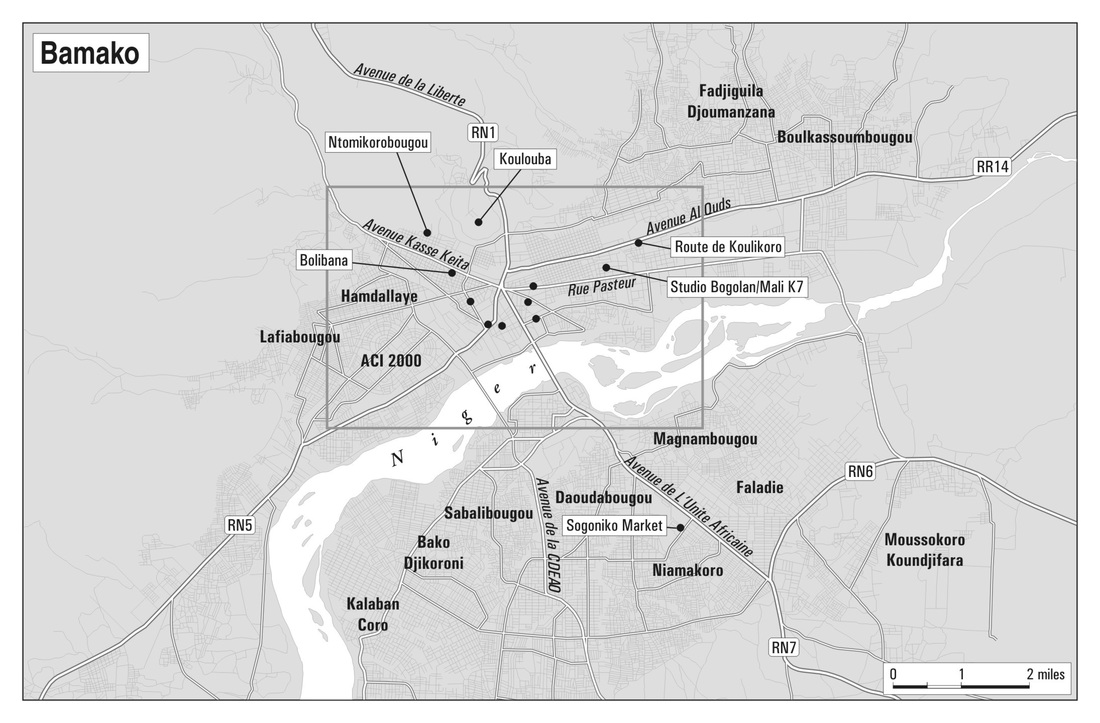Representing Bamako
|
Chapter 1: Representing Bamako introduces the reader to the city of Bamako, emphasizing popular expressions of urban culture that portray, inscribe, and resound the moral and ethical production of space. Through theoretical, sonic, textual, and ethnographic analysis this chapter explores how Bamako residents experience and express the civility and wildness of everyday life in an African city.
|
KEY TERMS
WHO'S WHO
QUESTIONS FOR DISCUSSION
FURTHER READING & DISCUSSION
|
